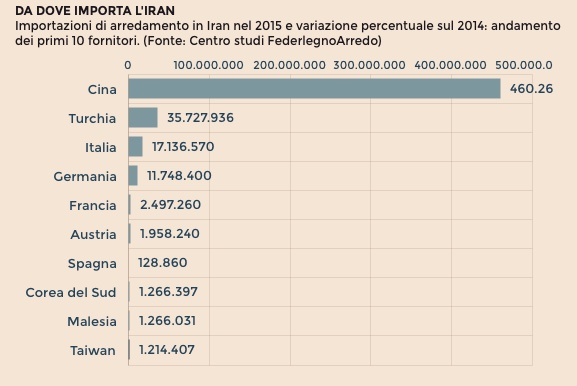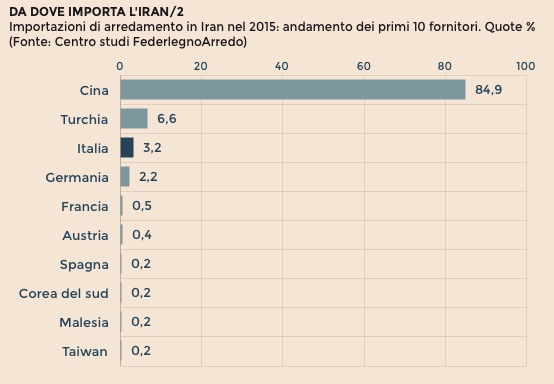
The “USA according to Donald Trump” has earmarked Iran as a country to be kept isolated, but the Italians will need to do a few sums this time round.
Let’s just say that the statistics tell us that Iran can be considered the new emerging market for Italian luxury furniture.
Italian manufacturers know this and are starting to keep a close eye on the Persian market, using the same model as that adopted for Russia: to get there before the international competitors, well aware of what they have to offer on the luxury product market, and in particular by investing in that area of the world.
The first data that emerge (source: Sole 24 ore) provide clear indications of Teheran’s interest in Italian furniture and furnishings.
Italian luxury furniture arrive to Iran

Because the figures are already very encouraging; they rank Italy in third place as a supplier to Iran in this sector, with a share of 3.2%. In actual fact, in 2015 Italy exported furniture and other wood furnishing products for a value of over 17 million euro, an increase of 48.5% compared to 2014, a year during which Iran’s purchases from abroad slackened off. And the positive trend has been confirmed by the 2016 data, which record an increase of close on 70%.
Iran is the Middle Eastern country that is growing most rapidly (+4% increase in the GDP expected until 2020) and it has many wealthy, well-educated young people who follow Western trends in products, thereby making the country one of the main market outlets for the turnkey contract formula in Italian luxury furnishing.
The reasons are simple.

In particular, it is important to remember that the construction industry is literally booming in Iran (both in terms of new buildings and restorations), and that this trend is expected to continue in years to come, particularly as regards turnkey contracts in the hotel business.
On this wave of activity, 400 four-and five-star hotels are scheduled to be built all over the country, so they are going to require unique pieces of furniture and luxury furniture.
It is, therefore, of fundamental importance to develop important relations with the general contractors, developers and architecture or interior design firms involved in the large property development projects, not forgetting to highlight the long tradition of cultural exchanges between our country and Iran, from which – in the past – many young people came, to study architecture in Italy.
